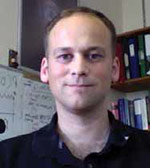 Dr James Allison
Dr James AllisonBolton Fellow, CSIRO Astronomy and Space Science
@theastrojim
James Allison is using the next-generation Australian Square Kilometre Array Pathfi nder radio telescope to map out the reservoir of star fuel during a 4 billion-year period of galaxy evolution that has, until recently, remained largely unexplored. Making use of Bayesian model comparison, he specialises in detecting absorption of the radio signal emitted by supermassive black holes at the centre of distant galaxies. Before joining CSIRO as a Bolton Fellow, James was a Super Science Fellow at the University of Sydney, where he used the recently upgraded Australia Telescope Compact Array to probe the gaseous environments in which newly triggered radio galaxies are formed. In 2010, he completed his PhD in astrophysics at the University of Oxford.
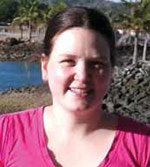 Dr Julie Banfield
Dr Julie BanfieldPostdoctoral Fellow, CSIRO Astronomy and Space Science
@42jkb
Julie Banfi eld is a postdoctoral fellow at CSIRO Astronomy and Space Science, working on the evolution and formation of galaxies across cosmic time using magnetic fi elds. Julie is a member of the Evolutionary Map of the Universe and is the project leader of the citizen science project Radio Galaxy Zoo.
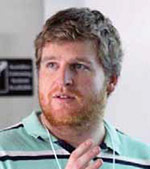 Dr Luke A Barnes
Dr Luke A BarnesSpeaker
Super Science Postdoctoral Fellow, Sydney Institute for Astronomy, University of Sydney
Luke Barnes is a postdoctoral researcher at the Sydney Institute for Astronomy. Luke’s university medal from the University of Sydney helped him earn a scholarship to complete a PhD at the University of Cambridge. He has published papers in the fi eld of galaxy formation, and recently has taken an interest in the fi ne-tuning of the Universe for intelligent life. He blogs at letterstonature.wordpress.com
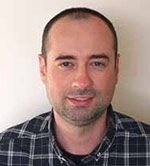 Mr Maksym Bernyk
Mr Maksym BernykPhD student, Centre for Astrophysics and Supercomputing, Swinburne University of Technology
Max Bernyk is working on e-research solutions for large astronomical datasets and galaxy formation models. Max is designing cloud systems for storing and processing synthetic galaxy catalogues and modelling the active galactic nucleus (AGN) feedback on galaxy star formation. He is also interested in high-performance computing and graphics processing units (GPU) – accelerated computations.
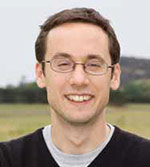 Associate Professor Chris Blake
Associate Professor Chris BlakeARC Future Fellow, Centre for Astrophysics and Supercomputing, Swinburne University of Technology
Chris Blake is an astrophysicist based at Swinburne University. His current research uses the large-scale structure of the Universe to study the laws of gravity on cosmological scales. Chris is leading a new project using observations at the Anglo-Australian Telescope to perform new tests of General Relativity.
 Dr Douglas Bock
Dr Douglas BockOrganising Committee
Research Director, Australia Telescope National Facility Operations, CSIRO Astronomy and Space Science
Douglas Bock has been with CSIRO since 2010 and leads operations for the Australia Telescope National Facility (ATNF), which includes the Australia Telescope Compact Array, Parkes Telescope, Mopra Telescope, and the Australian Square Kilometre Array Pathfi nder (ASKAP). Douglas has made the focus of his career the design, construction and operation of radio telescopes. He was previously Assistant Director Operations and project manager for the Combined Array in Millimeter-wave Astronomy and system scientist for the Allen Telescope Array (both in California). His current activity is focused on evolving the ATNF to prepare for the SKA era, including transitioning ASKAP into its operational phase. He is also active in SKA operations planning.
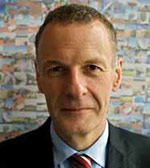 Dr Brian Boyle
Dr Brian BoyleMentor
SKA Project Director, Australian Government Department of Industry
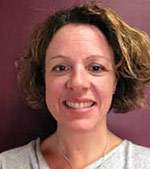 Dr Kate Brooks
Dr Kate BrooksOrganising Committee
Deputy Head Operations, Australia Telescope National Facility Operations, CSIRO Astronomy and Space Science
Kate Brooks is the deputy head of Operations of the Australia Telescope National Facility. Kate is responsible for the operations of CSIRO’s three observatory sites: Parkes and Narrabri in country New South Wales and the Murchison Radioastronomy Observatory (MRO) in Western Australia. Part of her work portfolio includes management of the MRO Indigenous Land Use Agreement. Kate joined the Council of the Astronomical Society of Australia in 2009 and was president of the society between July 2011 and July 2013. She was a member of the inaugural steering committee for the society’s chapter on Women in Astronomy and has recently been appointment to the board for the National Foundation for Australian Women. Kate is committed to supporting young women scientists and promoting diversity and inclusion.
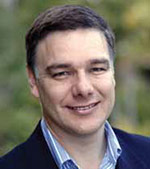 Dr Paul Brooks
Dr Paul BrooksSpeaker
General Manager—Networks and Technology, Trident Subsea Cables
Paul Brooks leads Layer10 Advisory, an independent consultancy practice specialising in telecommunications strategy, internet architecture, policy and product design. Sometimes described as a ‘Serial CTO’, Paul provides technical expertise to service providers, regulators and enterprises in Australia, and elsewhere. Paul was actively involved in the early designs for the NBN, and is currently working to build a new subsea cable from Perth to Singapore and the Pilbara. Paul is an active participant within the Australian ISP community. He is a director of the Internet Society of Australia (a chapter of the global Internet Society), Interplanetary Networking chapter, and a co-founder and former director of Vocus Group Limited. He holds a BSc (Honours) in physics and computer science from the University of Adelaide, and a PhD in astrophysics from the University of New South Wales.
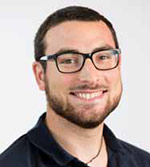 Dr Davide Burlon
Dr Davide BurlonPostdoctoral researcher, University of Sydney
@SubEddington
Davide Burlon graduated in the high-energy group at the Max Planck Institute for Extraterrestrial Physics before moving to the University of Sydney as research associate. Since completing a thesis on the high-energy emission that either precedes stellar explosions, known as gamma-ray bursts, or comes from nearby active galaxies, he has been interested in emission from black holes. He is now advising the transient working group of the multi-billion dollar Square Kilometre Array.
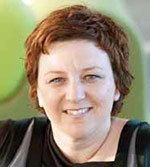 Ms Annette Cairnduff
Ms Annette CairnduffMentor
Director, Social Inclusion, University of Sydney
Annette Cairnduff leads the University of Sydney’s social inclusion strategy. This includes managing the Compass program which works with schools and communities to encourage participation in higher education. Compass works to address the underrepresentation in higher education of students from low socio-economic backgrounds, Aboriginal and Torres Strait Islander students and regional students. Since it was started in 2009 Compass has had almost 100,000 engagements with students, teachers and parents. Annette has worked for 25 years in social justice and education programs across government and non-government organisations. She has undergraduate qualifi cations in both primary teaching and community development and a Masters in Adult Education.
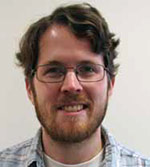 Dr Michael Childress
Dr Michael ChildressPostdoctoral researcher, The Australian National University
Michael Childress specialises in the study of Type Ia supernovae, particularly through observations of the supernovae and their environments. He received his PhD in physics from the University of California Berkeley in 2011. Michael is currently the leader of optical spectroscopy research for The Australian National University supernova group, led by Professor Brian Schmidt.
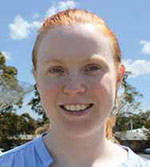 Dr Kate Chow
Dr Kate ChowCSIRO Square Kilometre Array Site & Infrastructure Executive Offi cer, CSIRO Astronomy and Space Science
Kate Chow completed her PhD on the evolution of young radio galaxies in 2012, before beginning a Postdoctoral Fellowship on large radio surveys. Kate spent fi ve months working on her postdoctoral research, before being appointed as the site and infrastructure executive offi cer at the CSIRO Square Kilometre Array (SKA). Kate now works with various teams on the world’s largest radio telescope, the SKA. She is a member of the SKA pre-construction consortium, Infrastructure Australia, and is also involved in supporting CSIRO’s work on the Australian Radio-Quiet Zone, Indigenous engagement, and site establishment for the SKA. She also remains engaged in research in her areas of expertise.
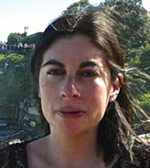 Dr Yanett Contreras
Dr Yanett ContrerasOffice of the Chief Executive Postdoctoral Fellow, Australia Telescope National Facility
Yanett Contreras is an expert in the fi eld of star formation. She obtained her PhD from the University of Chile and is currently an OCE Postdoctoral Fellow at CSIRO Astronomy and Space Science. Her research aims to understand what drives the formation of massive stars in our Galaxy. She has used several of the world’s largest telescopes, including the CSIRO’s Mopra and Australia Telescope Compact Array as part of her research. She is also passionate about the need to educate children in science, being involved in an education program for Aboriginal school children in remote Western Australia.
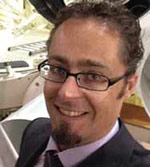 Dr Alexander Cooke
Dr Alexander CookeSpeaker
Manager, Science Policy, Science Policy and Governance Division, Australian Government Department of Industry
Alexander Cooke is the manager of the Science Policy and Governance Division. He is responsible for the development and coordination of policies around science and research. This includes advising the Commonwealth Science Council and supporting the newly formed National Science, Technology and Research Committee. He is also responsible for astronomy policy in consultation with the Australian Square Kilometre Array Project Offi ce and the Australian Astronomical Observatory. Alexander delivered the National Research Investment Plan and has sought to encourage the uptake of science into policy, including through the development of the report, The Place of Science in Policy Development in the Public Service.
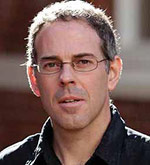 Associate Professor Darren Croton
Associate Professor Darren CrotonOrganising Committee
Queen Elizabeth II Research Fellow, Centre for Astrophysics and Supercomputing, Swinburne University of Technology
@darrencroton
Darren Croton is an associate professor and Queen Elizabeth II Research Fellow in the Centre for Astrophysics and Supercomputing at Swinburne University of Technology. He is a theorist who works on the formation and evolution of galaxies in the local and distant Universe, using both simulations and large observational data sets. He has recently moved to address the challenging problem of big data in astronomy, focusing on data access through innovative virtual laboratories and cloud-based technologies.
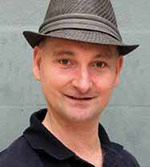 Mr Mike Dalley
Mr Mike DalleyAstronomy Manager, Ayers Rock Resort
During his time working at the iconic Ayers Rock Resort as the astronomy manager, Mike Dalley has been able to create a new area of free-choice learning for the public to engage in astronomy. The creation of dedicated astronomy tours and the building of a partnership between the ARC Centre of Excellence for All-sky Astrophysics (CAASTRO) and Ayers Rock Resort have only been a few of the steps he has taken to succeed in this newly growing area of professional resort astronomy. Mike is currently a member of CAASTRO and a chairperson for the International Astronomical Union. He is completing his postgraduate studies in astronomy, in addition to being dedicated to creating effective and effi cient astronomy outreach to the public.
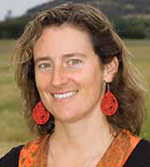 Associate Professor Tamara Davis
Associate Professor Tamara DavisOrganising Committee and Speaker
ARC Future Fellow, School of Mathematics and Physics, The University of Queensland
Tamara Davis specialises in interpreting astrophysical observations in terms of their implications for fundamental physics. Using the cosmic-scale experiments that the Universe naturally provides, such as supernovae and the clustering of galaxies, she investigates dark energy and dark matter. Her current focus is the Australian Dark Energy Survey (OzDES), which will take spectra of thousands of supernovae, and monitor hundreds of active galaxies to test advanced theories of gravity. Tamara is currently an Associate Professor and Australian Research Council Future Fellow at The University of Queensland.
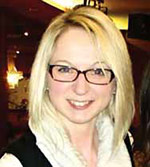 Dr Joanne Dawson
Dr Joanne DawsonLecturer in Astronomy and Astrophysics, Department of Physics and Astronomy, Macquarie University and CSIRO Astronomy and Space Science
Jo Dawson is a lecturer at Macquarie University and a researcher at CSIRO Astronomy and Space Science (CASS). Her research focuses on the evolution of the interstellar medium in the Milky Way and nearby galaxies and, in particular, on the mechanisms by which atomic gas is processed into star-forming clouds. She is joint Principal Investigator of SPLASH (the Southern Parkes Large-Area Survey in Hydroxyl), a large-scale, sensitive survey of OH in the Southern Galactic Plane. She gained her PhD in 2011 from Nagoya University, Japan, and was previously an Australian Research Council Super Science Fellow at the University of Tasmania, and a Bolton Fellow at CASS.
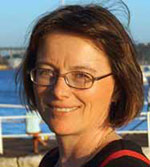 Ms Céline D’orgeville
Ms Céline D’orgevilleSpeaker
Instrument Scientist—Laser Physics, College of Physical and Mathematical Sciences, The Australian National University
Céline d’Orgeville is a world-renowned expert in sodium laser guide star (LGS) adaptive optics applied to astronomy and laser tracking of space debris. From 1999 to 2011, Céline led the Gemini Observatory laser program to equip both Gemini 8 metre telescopes with state-of-the-art LGS facilities. In 2012, she joined The Australian National University Research School of Astronomy and Astrophysics, where she currently leads LGS activities undertaken at the Advanced Instrumentation and Research Centre (AITC). Céline is also the AITC student convener, and the chair of the school Access and Equity Committee. She is passionate about science communication and a strong supporter of diversity in all forms.
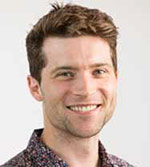 Dr Alan Duffy
Dr Alan DuffyOrganising Committee
Research Fellow, Centre for Astrophysics and Supercomputing, Swinburne University of Technology
@astroduff
Alan Duffy is a Research Fellow at Swinburne University of Technology. He has a joint position as a science communications expert, engaging in outreach activities while continuing his research on galaxy formation and dark matter through creating large-scale hydrodynamic simulations to model galaxies in cosmological volumes. In particular, he specialises in the growth of the fi rst galaxies and their impact on reionisation. Previously, he has modelled (HI) gas in galaxies and dark matter properties at low redshifts. He has also published on constraining cosmological parameters with radio telescopes and optimising galaxy surveys using the Australian Square Kilometre Array Pathfi nder facilities.
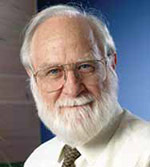 Professor Ron Ekers FAA FRS
Professor Ron Ekers FAA FRSOversight Committee (Chair) Fellow, CSIRO
Ron Ekers was appointed Foundation Director of CSIRO’s Australia Telescope National Facility and returned to Australia in 1988. He was director of the VLA, the major national radio telescope in the US, from 1980 until 1987, chair of the Square Kilometre Array steering committee from 2000 to 2002, and president of the International Astronomical Union from 2003 to 2006. Ron’s research interests include extragalactic astronomy, especially cosmology, galactic nuclei, ultra-high-energy particle physics and radio astronomical techniques. He is also involved in the history of the development of radio astronomical techniques, with particular focus on the nature of scientific discoveries.
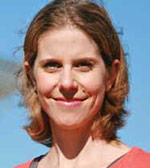 Dr Ilana Feain
Dr Ilana FeainSpeaker
Senior Research Fellow, University of Sydney
Ilana Feain obtained her PhD in astrophysics from the University of Sydney in 2006. In 2007, Ilana was awarded the Inaugural L’Oreal For Women in Science Fellowship for her research and outreach work with Global Jet Watch, placing telescopes in girls schools across the world. From 2006 until 2012, Ilana was a research astronomer and project scientist on the Australian Square Kilometre Array Pathfi nder (ASKAP) at CSIRO Astronomy and Space Science. In a research capacity, Ilana focused on radio galaxy evolution and black hole feedback, and as project scientist, she led the creation of the ASKAP Survey science teams and the early scientifi c, user and commissioning requirements for the ASKAP telescope. From 2012 to 2014, Ilana began focusing on the development of a cross-disciplinary research program to enable ASKAP’s novel receiver technology for use beyond astronomy, including in health and defence. This led to a major career change in 2014, when Ilana moved into medical physics (radiotherapy), accepting a senior research fellowship in the Radiation Physics Laboratory at the School of Medicine of the University of Sydney. Now, Ilana is the project leader of Nano-X: a novel and cost-effective radiotherapy machine designed to level the playing fi eld in global accessibility to equitable cancer treatment. This role involves X-ray instrumentation, real-time tomographic signal processing, and science and research project management. Ilana currently supervises PhD students in both medical physics and astrophysics, and is an affi liate of the ARC Centre of Excellence for All-sky Astrophysics (CAASTRO).
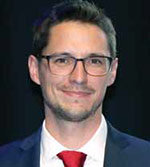 Dr Alessandro Fedrizzi
Dr Alessandro FedrizziSpeaker
Australian Research Council Discovery Early Career Research Award Fellow, The University of Queensland
Alessandro Fedrizzi is an expert in photonic quantum information processing and experimental quantum foundations. He completed his PhD in physics at the University of Vienna in 2008 and subsequently joined The University of Queensland as a Postdoctoral Research Fellow. His research interests cover topics ranging from foundational questions to photonic engineering and its application to problems in quantum computing, quantum communication and quantum simulation. In 2012, Alessandro was granted an Australian Research Council Discovery Early Career Research Award.
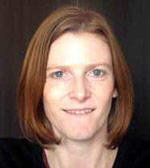 Dr Yeshe Fenner
Dr Yeshe FennerSpeaker
Executive Officer, Astronomy Australia Limited
Yeshe Fenner has been the executive officer at Astronomy Australia Ltd since 2012. Her qualifi cations include a PhD in astrophysics from Swinburne University (2001–2005) and a project management professional (PMP®) certifi cation. Yeshe held an Institute for Theory and Computation Postdoctoral Fellowship at Harvard-Smithsonian Center for Astrophysics before moving into project management roles in other areas of science and biomedicine, including project manager of a women’s health study at Murdoch Childrens Research Institute/Royal Women’s Hospital, and operations and project coordinator at the National Resource for Imaging Mass Spectrometry, Harvard Medical School.
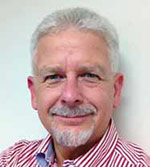 Mr Roger Franzen
Mr Roger FranzenMentor and Speaker
AGMT Technical Program Manager, Australian Giant Magellan Telescope, The Australian National University
Roger Franzen is a chartered profession engineer with extensive experience in the management of organisations involved in the design development and construction of complex multi-discipline systems for space and astronomical applications.
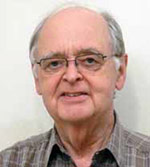 Professor Bob Frater AO FAA FTSE
Professor Bob Frater AO FAA FTSEOversight Committee, Mentor and Speaker Vice President for Innovation, ResMed
Over more than 50 years, Bob Frater has researched electronics, telecommunications, electroacoustics, radioastronomy instrumentation, and electroacoustic and biomedical devices. In 1996, he was made an Offi cer of the Order of Australia for his contributions to science, including his work on the construction of the Australia Telescope at Narrabri in northern New South Wales. The telescope has just celebrated its 25th anniversary. Bob has been vice president for innovation with ResMed Ltd and chief technology offi cer for Innovation Capital since leaving CSIRO in 1999, where he had been deputy chief executive for 11 years. He serves on a number of advisory committees. He is a Fellow of the Australian Academy of Science and a Fellow of the Australian Academy of Technological Sciences and Engineering.
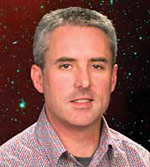 Dr Duncan Galloway
Dr Duncan GallowaySpeaker
Senior Lecturer, Monash University
@DuncanKGalloway
Duncan Galloway is an observational astrophysicist focusing on X-ray studies of accreting neutron stars. His research interests also encompass searches for previously unknown ‘transient’ sources across the electromagnetic spectrum, and even gravitational waves. He grew up in Tasmania, and studied at the University of Tasmania in Hobart. He worked as an oceanographer before completing a PhD in astrophysics, which led to postdoctoral work at the Massachusetts Institute of Technology in Boston, US. He returned to Australia in 2005 to take up fellowships at the University of Melbourne and then Monash University. Duncan is presently a senior lecturer at Monash University.
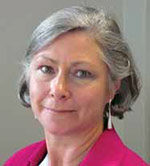 Ms Jenny Gordon
Ms Jenny GordonSpeaker
Principal Adviser Research, Productivity Commission
Jenny Gordon is the Principal Advisor Research at the Productivity Commission, where she oversees the Commission’s research program and provides advice and quality assurance for research and inquiry work across both the Melbourne and Canberra Offi ces. She joined the Commission in March 2008, after 14 years at the Centre for International Economics, six as a Director and partner in the fi rm. Jenny completed a PhD in economics from Harvard University in 1993.
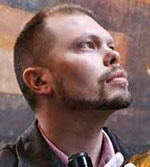 Dr Duane Hamacher
Dr Duane HamacherSpeaker
Lecturer and ARC Discovery Early Career Research Fellow, Nura Gili Indigenous Programs Unit, University of New South Wales
@AboriginalAstro
Duane Hamacher is a lecturer and an Australian Research Council (ARC) Discovery Early Career Research Fellow at the Nura Gili Indigenous Programs Unit at the University of New South Wales. His teaching and research focuses on cultural and historical astronomy, particularly Indigenous astronomical knowledge systems, with a focus on Australia and Oceania. His ARC-funded research explores the various ways in which Torres Strait Islanders developed knowledge systems about the sun, moon and stars. This research involves working closely with Indigenous elders, studying and surveying material culture and archaeological sites, and analysing archival records. Duane is also an astronomy educator and consultant curator at Sydney Observatory.
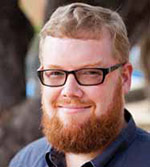 Dr Paul Hancock
Dr Paul HancockCurtin Early Career Research Fellow, Curtin University
@DrPaulHancock
Paul Hancock spent his PhD working on the Australia Telescope Compact Array 20 GHz Survey (AT20G) where he gained the skills required to conduct large surveys and process large amounts of data. In the years since his PhD, Paul has been working on a number of projects related to radio variability, including a search for radio emission from Type Ia supernovae, the discovery of two populations of GRB radio afterglows. Paul is now working on a survey to detect scintillation at low frequencies with the Murchison Widefi eld Array.
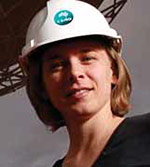 Dr Lisa Harvey-smith
Dr Lisa Harvey-smithSpeaker
Research Astronomer, CSIRO Astronomy and Space Science
@lisaharveysmith
Lisa Harvey-Smith is a research astronomer at CSIRO and the project scientist for the Australian Square Kilometre Array Pathfi nder telescope, located in remote Western Australia. Her research focuses on the physical processes surrounding the birth and death of stars. Lisa is involved in the development of the world’s largest telescope—the Square Kilometre Array—and has a science advisory role to the Australian Government. Passionate about communicating science to non-specialists, Lisa popularises astronomy on television, radio and the written press. She frequently gives lectures in Australia and around the world. Another of her passions is education and mentoring. Lisa maintains active partnerships with two schools, one in metropolitan Sydney and the other in a remote Aboriginal community in Western Australia. As chair of the Astronomical Society of Australia’s Chapter for Women in Astronomy, she advocates for best practices in astronomy workplaces, and this year led the launch of a national gender equity scheme called the Pleiades Awards.
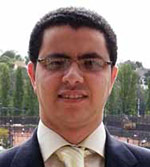 Dr Amr Hassan
Dr Amr HassangSTAR Projects and Engagement Support Leader, Centre for Astrophysics and Supercomputing, Swinburne University of Technology
@Amr_H_Hassan
Amr Hassan is the projects and engagement support leader for the Swinburne Supercomputer (gSTAR). Through his current role, he is leading and coordinating different activities to enhance the usage of high-performance computing (HPC) facilities by the Australian astronomy community in terms of impact and accessibility. Also, he assists in the development of strategies to meet the future HPC needs of the Australian astronomy community. Amr has a PhD in astrophysics and HPC from Swinburne University of Technology, Australia. His research focus includes scientifi c computing, ultra-scale visualisation and HPC. His current research concentrates on utilizing distributed graphics processing units to solve large-scale astronomical data analysis and visualisation problems.
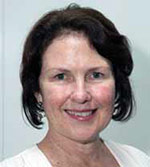 Dr Marian Heard
Dr Marian HeardMentor
Director, Indigenous STEM Education, CSIRO Education and Outreach
For almost 20 years, Marian Heard has been developing and managing national science education programs in Australia. As education and public awareness manager at the Australian Academy of Science, she initiated the highly successful Primary Connections program and at CSIRO, established the Scientists and Mathematicians in Schools program. Following a signifi cant investment of $28.8 million from the BHP Billiton Foundation to undertake a fi ve-year project to improve the participation and achievement of Indigenous students in science, technology, engineering and mathematics, she has recently taken on the exciting new role of Director, Indigenous STEM Education, with CSIRO.
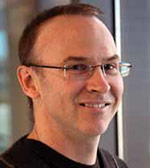 Associate Professor Andrew Hopkins
Associate Professor Andrew HopkinsPanellist
Head of Research and Outreach, Australian Astronomical Observatory
@evil_dr_hopkins
Andrew Hopkins has over 15 years experience in professional astronomy research, having held a Hubble Fellowship in the US and an Australian Research Council Queen Elizabeth II Fellowship at the University of Sydney before moving to the Australian Astronomical Observatory (AAO) in 2008. His research focuses on the evolution of star formation in galaxies over cosmic history. He is leading the development of the AAO data archive as a node in a national federated data archive program for astronomy. He also leads a major new 5-year observational project, TAIPAN, to begin in 2016, that capitalises on novel ‘starbugs’ technology, and which will make signifi cant breakthroughs in cosmology and galaxy evolution. Andrew is leading the AAO’s effort to promote links and develop new partnerships with industry and corporate groups.
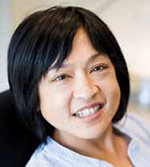 Associate Professor Minh Huynh
Associate Professor Minh HuynhAssociate Research Professor, International Centre for Radio Astronomy Research, The University of Western Australia
Minh Huynh is an astronomer at the International Centre for Radio Astronomy Research at The University of Western Australia. She studies galaxy formation and evolution, using sensitive multiwavelength data from ground-based and spacebased observatories. From 2010 to 2013 she was the deputy international project scientist for the Square Kilometre Array, the next-generation radio observatory, which will be built in Western Australia and South Africa.
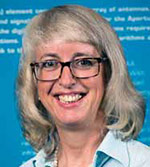 Professor Carole Jackson
Professor Carole JacksonOrganising Committee and Panellist Western Australian Premier’s Research Fellow, International Centre for Radio Astronomy Research, Curtin University
Carole Jackson is a Western Australian Premier’s Research Fellow and Professor of Radio Astronomy at the Curtin Institute of Radio Astronomy. Her research interests are centred on extragalactic radio source surveys, spanning population and evolutionary studies of the most powerful radio galaxies and quasars. She is a long-time contributor to the international Square Kilometre Array (SKA) project, having managed the design and delivery of the 36 dish antennas for the Australian SKA Pathfi nder (ASKAP) telescope. Carole has deep experience of industry collaborations, and through chairing the Australian astronomy Decadal Plan (2016–2025) industry review she is at the forefront of developing improved engagement strategies.
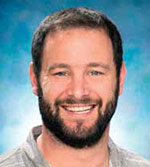 Dr Paul Lasky
Dr Paul LaskyPostdoctoral Research Fellow, Monash University
Paul Lasky is a Postdoctoral Fellow at Monash University. He is an expert on high-energy and gravitational wave astrophysics, with a particular focus on neutron star phenomenology and gravitational wave detection. Paul is a member of the Laser Interferometer Gravitational Wave Observatory (LIGO) Scientifi c Collaboration, contributing to the search for periodic gravitational waves from rapidly rotating neutron stars. He has recently started working at Monash University, where he is also contributing to the global effort to detect gravitational waves using pulsar timing arrays. Paul has recently become a member of the Parkes Pulsar Timing Array collaboration.
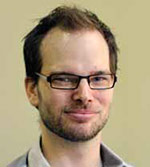 Dr Benjamin Lewis
Dr Benjamin LewisProducer, Royal Institute of Australia
@BenSciGuy
Ben Lewis is a science communicator and producer with RiAus, where he conceptualises, organises and delivers public science events and digital content. He has been involved in public events around Australia and was producer and director of The Science of Doctor Who, which toured nationally in 2014 in association with the BBC. His digital content features on RiAus TV, ScienceAlert and News Limited websites, community radio and podcasts. Ben is also a regular guest on ABC radio around Australia, features in a fortnightly segment on commercial radio in Adelaide, and has been a guest speaker at universities around Australia on communicating science to the public. He is also producer of ECR Network, a program of events specifi cally for early-career researchers based in Adelaide, but live-streamed nationally and internationally.
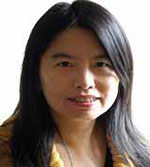 Dr Haida Liang
Dr Haida LiangSpeaker
Reader in Physics, School of Science & Technology, Nottingham Trent University
Haida Liang gained a PhD in astronomy and astrophysics from The Australian National University (in collaboration with the Australia Telescope National Facility) in 1996. Her thesis was on the distribution of matter in clusters of galaxies, focusing mainly on the detection of the Sunyaev-Zel’dovich effect using the Australian Telescope Compact Array. After her PhD, she joined the X-ray Astronomy group at Service d’Astrophysique of Commissariat à l’Energie Atomique in France and then continued her work on clusters of galaxies at the Physics Department of the University of Bristol. In 2002, she changed her career path and worked at the Scientifi c Department of the National Gallery (London) on the development of non-invasive imaging techniques for the examination of paintings. She is currently leading the Imaging Science for Archaeology and Art Conservation group at Nottingham Trent University in the UK. Her main research interests are the development and application of non-invasive imaging and spectroscopic techniques to art conservation and archaeology.
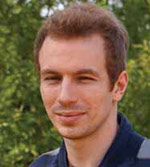 Dr Edward Macaulay
Dr Edward MacaulayPostdoctoral researcher, The University of Queensland
Ed Macaulay’s main research interest focuses on testing fundamental physics with cosmological surveys. He has previously worked on measuring the large-scale structure of the Universe with the peculiar velocities of galaxies, and on forecasting tests on the nature of dark matter with the next generation of cosmological surveys. Ed is currently working as a member of the OzDES survey to combine peculiar velocities with weak lensing, which should lead to unique new insights on gravity and dark matter.
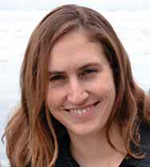 Dr Katie Mack
Dr Katie MackDECRA Fellow, School of Physics, University of Melbourne
@AstroKatie
Katherine (Katie) Mack is a theoretical astrophysicist. Her work focuses on fi nding new ways to learn about the early Universe and fundamental physics using astronomical observations, probing the building blocks of nature by examining the cosmos on the largest scales. Throughout her career as a researcher at Caltech, Princeton University, the University of Cambridge, and now the University of Melbourne, she has studied dark matter, black holes, cosmic strings and the formation of the fi rst galaxies in the Universe. Katie is also an active online science communicator and is passionate about science outreach. As a science writer, she has been published by Slate, Sky & Telescope, Time.com, the Economist tech blog ‘Babbage’, and other popular publications.
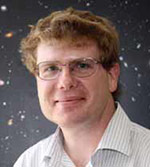 Dr Jean-pierre Macquart
Dr Jean-pierre MacquartSenior Lecturer, Curtin Institute of Radio Astronomy
Jean-Pierre Macquart specialises in the study of transient astrophysical sources and in the interstellar and intergalactic medium through which their radiation propagates. He also studies black holes, particularly the massive black hole at the centre of our own Galaxy.
Research Project Officer, CSIRO
Malte Marquarding is an expert in scientifi c computing in astronomy. After completing his MSc in astrophysics at the University of Melbourne in 2000, he took up a position in scientifi c computing at the Australia Telescope National Facility (CSIRO). He has been there ever since, creating single dish data reduction and analysis packages and astronomical data visualisation software, which is also used in a number of large international projects such as the Atacama Large Millimeter Array. Most recently, he has been designing and implementing software for the Australian Square Kilometre Array Pathfi nder (ASKAP). Malte is also an active contributor to educating the astronomy community in programming techniques and has been chairing the Astronomical Society of Australia’s Astroinformatics Schools.
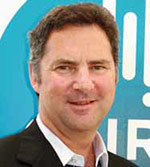 Dr Larry R Marshall
Dr Larry R MarshallSpeaker
Managing Director, Southern Cross Ventures
Larry Marshall is the managing director of Southern Cross Ventures, a venture capital fi rm based in Silicon Valley, Shanghai and Sydney, specialising in growing Australian technology companies in Asia and the US. He has a longstanding partnership with SoftBank China, China’s most successful venture capital fi rm, and co-manages the Renewable Energy Fund, founded in 2012, with them. He has lived in the US for 25 years and founded and/or was CEO of Light Solutions, Iridex (Nasdaq: IRIX), Iriderm, Lightbit, Translucent, AOC, Arasor (ASX: ARR), and the Renewable Energy Fund—driving two of these companies to successful initial public offerings. Larry began his career as an engineer with a PhD in physics and has over 100 publications and presentations. He became an inventor, with 20 patents protecting numerous commercial products and generating over $200 million in revenue. He then became an entrepreneur, raising over $100 million in funding and creating companies with over $1 billion in market capital. Larry is now an investor with $400 million under management. He has served on 20 boards of high-tech companies operating in the US, Australia and China. He is a passionate supporter of Australian innovation and Australian entrepreneurs. Larry Marshall has been announced as the new Chief Executive of CSIRO. He will start in January 2015.
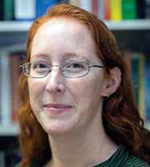 Dr Sarah Martell
Dr Sarah MartellAustralian Research Council Discovery Early Career Researcher Award Fellow/ Lecturer, University of New South Wales
@_sarahmartell
Sarah Martell is an Australian Research Council Discovery Early Career Researcher Award Fellow and a lecturer in the School of Physics at the University of New South Wales. Her research focuses on using the chemical compositions of stars to learn about their formation and internal processes. As the project manager for observations in the Galactic Archaeology with HERMES (GALAH) survey, she is driving the data collection that will make it possible to do these studies on a massive scale, determining the chemical compositions of one million stars in the Milky Way to explore its history of star formation and chemical evolution.
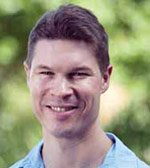 Dr James Miller-jones
Dr James Miller-jonesSenior Lecturer, International Centre for Radio Astronomy Research, Curtin University
James Miller-Jones is an Australian Research Council Future Fellow and a senior lecturer at Curtin University. He is an expert in the fi eld of jets from accreting stellar-mass black holes, aiming to understand the connection between relativistic jets and the accretion fl ow that powers them. His current work is focused on understanding the nature of accretion and jet ejection at the lowest luminosities, via studies of the quiescent state in which the majority of accreting black holes are found. James is leading a deep radio survey of nearby southern globular clusters to search for new quiescent black hole X-ray binaries, seeking to determine the prevalence of black holes in clusters and estimate their mass function.
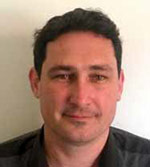 Dr Daniel Mitchell
Dr Daniel MitchellResearch Scientist, CSIRO Astronomy and Space Science
Daniel Mitchell is a research scientist in the CSIRO division of Astronomy and Space Science. His research interests include solving imaging and deconvolution challenges of wide-fi eld-of-view radioastronomy arrays, searching for the faint signatures of hydrogen gas fl uctuations in the early Universe, and distributed, real-time data processing. Daniel is developing calibration and imaging software for the Australian Square Kilometre Array Pathfi nder, the Murchison Widefi eld Array, and is a member of the Square Kilometre Array Science Data Processor consortium. He has published on real-time calibration and imaging algorithms, widefi eld polarised imaging, algorithm acceleration using graphics processing units, and strategies for mitigating radio-frequency interference.
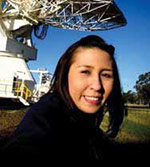 Dr Vanessa Moss
Dr Vanessa MossPostdoctoral Researcher, ARC Centre of Excellence for All-sky Astrophysics, University of Sydney
@cosmicpudding
Dr Vanessa Moss is a postdoctoral researcher at the ARC Centre of Excellence for All-sky Astrophysics (CAASTRO), working as part of the FLASH team: the First Large Absorption Survey of HI. FLASH will probe the gas content of galaxies over billions of years in the Universe’s evolution for the fi rst time, seeking to understand how the hydrogen in our Universe has changed. As part of FLASH, she currently specialises in multi-wavelength characterisation, analysis and visualisation of galaxy targets. She has previously investigated disk-halo interaction in our Galaxy in order to determine how outfl ow and infall are shaping the evolution and fate of the Milky Way. She is keenly involved in science communication, education and outreach, is a guide at Sydney Observatory and currently co-runs the CAASTRO In The Classroom school education initiative. She is also an attendee of .Astronomy, which brings together researchers, educators, developers and communicators to share astronomy worldwide in an online context.
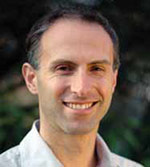 Associate Professor Michael Murphy
Associate Professor Michael MurphySpeaker
Centre for Astrophysics and Supercomputing, Swinburne University of Technology
@MTMurphy77
Michael Murphy is an observational astrophysicist researching aspects of cosmology—the Universe’s properties on the largest scales. He specialises in studying the tenous gas within, and between, distant galaxies and also the fundamental laws of nature in the early Universe. Michael completed a BSc with Honours in physics in 1999, and a PhD in 2003, at the University of New South Wales. He was a Research Fellow at the University of Cambridge from 2003 to 2007 and an Australian Research Council Queen Elizabeth II Fellow at Swinburne University of Technology from 2008 to 2012.
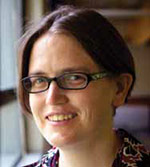 Dr Tara Murphy
Dr Tara MurphyOrganising Committee (Chair)
Senior Lecturer, School of Physics, University of Sydney
Tara Murphy completed her PhD in 2004 at the University of Edinburgh, and is currently an astrophysicist working in the School of Physics at the University of Sydney. She is a chief investigator at the ARC Centre of Excellence for All-sky Astrophysics (CAASTRO), leading an international team of researchers. Her research focuses on detecting and studying transient and highly variable astrophysical phenomena with next-generation radio telescopes. Tara is passionate about teaching and high school outreach and is a director of the National Computer Science School (NCSS) and the NCSS Challenge. This year Tara co-founded Grok Learning, a global start-up aiming to excite high school students about computational thinking.
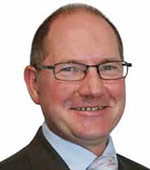 Mr Stephen Negus
Mr Stephen NegusPanellist
Industry Leader—Data and Telecommunications, Aurecon
@Steve_Negus
Steve Negus is the data and telecommunications industry leader for Aurecon. His responsibilities include industry strategy, growing mutually benefi cial client relationships and providing targeted delivery strategies to assist teams in developing execution plans for client projects. As the board chair for the INFRA AUS Consortium, Stephen brings his extensive experience with the procurement and delivery of design and project management services associated with major telecommunications and multidisciplinary facilities. Importantly, this has included his involvement with the Square Kilometre Array project since 2002 and his key strategic role on the Australian Square Kilometre Array Pathfi nder project.
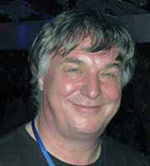 Professor Ray Norris
Professor Ray NorrisSpeaker
Honorary Fellow, CSIRO Australia Telescope National Facility
@RayPNorris
Ray Norris is an astrophysicist studying the evolution of galaxies over cosmic time. Educated at Cambridge and Manchester, his career with CSIRO Astronomy and Space Science included positions such as head of Astrophysics, and deputy director, acting director and director of the Australian Astronomy Major National research Facility, before he returned to full-time research in 2006. He leads the Evolutionary Map of the Universe (EMU) project—one of the two key projects driving the construction of the $165 million Australian Square Kilometre Array Pathfi nder telescope. The EMU project will transform our view of the radio sky, going 30 times deeper than any other large radio survey and discovering about 70 million galaxies.
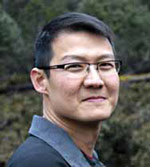 Dr Cheng Soon Ong
Dr Cheng Soon OngSpeaker
Principal Researcher, Machine Learning Research Group, NICTA
@ChengSoonOng
Cheng Soon Ong is interested in enabling scientifi c discovery by extending statistical machine learning methods. In recent years, he has developed new optimisation methods for solving problems such as ranking, feature selection and experimental design, with the aim of solving scientifi c questions in collaboration with experts in other fi elds. This has included diverse problems in genomics, systems biology and medical imaging. He is also an advocate of open source software and reproducible research in the context of machine learning. Cheng Soon Ong is a principal researcher at the Machine Learning Research Group, NICTA. He is also an adjunct associate professor at The Australian National University, and an honorary research fellow at the University of Melbourne.
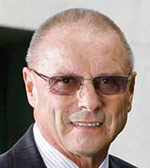 Dr John O’Sullivan FAA FIEAUST FTSE
Dr John O’Sullivan FAA FIEAUST FTSEMentor
John O’Sullivan has had an extensive career in wireless, signal processing and radiophysics, in both research and commercial contexts. At CSIRO he led research projects in signal processing and wireless communications which, among other outcomes, led to key technologies underpinning the now wi-fi wireless networking. His career has extended to roles in various companies, ranging from large companies (News Corp and Cisco) to several technology startups (Radiata, G2, Taggle). He returned to technology research for radio astronomy with CSIRO on the Australian pathfi nder for the next-generation international Square Kilometre Array radiotelescope. He is the winner of the 2013 MA Sargent award, the 2012 European Inventors Award, the 2010 Clunies-Ross Medal, the 2009 Australian Prime Ministers Prize for Science, the 2009 CSIRO Chairman’s Medal and the 1992 CSIRO Medal. He is a Fellow of the Institution of Engineers Australia, the Australian Academy of Science and the Australian Academy of Technological Science and Engineering.
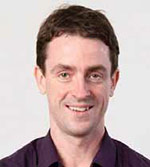 Dr David Parkinson
Dr David ParkinsonAustralian Research Council Future Fellow, School of Mathematics and Physics, The University of Queensland
@drdrparky
David Parkinson is an Australian Research Council (ARC) Future Fellow at The University of Queensland, Brisbane. He studies how the Universe was formed and has evolved using astronomical data to test Einstein’s theory of gravity. David has a PhD from the Institute of Cosmology and Gravitation at the University of Portsmouth (2004) and worked at the Astronomy Centre at the University of Sussex before joining The University of Queensland. He is chair of the Early Career Researcher chapter of the Astronomical Society of Australia, and is an associate member of the ARC Centre of Excellence for All-sky Astrophysics (CAASTRO).
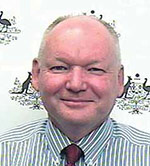 Dr Rob Porteous
Dr Rob PorteousSpeaker
Head of Division, Science Policy and Governance Division, Australian Government Department of Industry
Rob Porteous is head of the Science Policy and Governance Division in the Australian Government Department of Industry. His responsibilities include science and research policy, the governance arrangements for science agencies and infrastructure, the governance of trade controls on research, and international science engagement. Rob has extensive experience in industry, innovation, science, research and tertiary education policy development for the Australian Government. He has a particular interest in improving the linkage between industry and publicly funded research in institutions and universities. Rob has a PhD in plasma physics from The Australian National University and a BSc with fi rst class honours from The University of Western Australia.
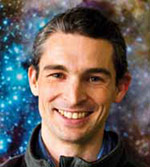 Dr Daniel Price
Dr Daniel PriceSenior Lecturer, Monash University
Daniel Price is a senior lecturer and Australian Research Council Future Fellow at the Monash Centre for Astrophysics in the School of Physics and David Parkinson Astronomy at Monash University in Melbourne, where he has been since 2008. Before this, he was a Royal Society University Research Fellow in the astrophysics group of the School of Physics at the University of Exeter (before which he also held a Particle Physics and Astronomy Research Council/ Science and Technology Facilities Council Postdoctoral Research Fellowship at Exeter). Daniel completed his PhD at the Institute of Astronomy at the University of Cambridge. His research interests are in computational astrophysics, with broad application across astronomy, but with a focus on star and planet formation as well as black hole accretion.
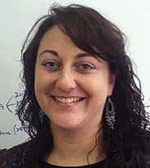 Dr Jill Rathborne
Dr Jill RathborneResearch Scientist, CSIRO Astronomy and Space Science
Jill Rathborne is an expert in the fi eld of high-mass star formation. By combining multi-wavelength data, using both ground-based and space-based observatories, single dishes and interferometers, Jill studies the very earliest stages in the formation of dense cores and the connection between these cores and the formation of individual stars and clusters. Using the unique capabilities of the new Atacama Large Millimeter/sub-millimeter Array (ALMA) located high in the Atacama desert in northern Chile, her research is uncovering the detailed physics that shapes a molecular cloud before star formation begins, which is important for understanding the process by which material is assembled to make a star and cluster.
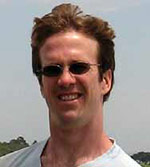 Dr Christian Reichardt
Dr Christian ReichardtLecturer, University of Melbourne
Christian Reichardt is a cosmologist who observes the cosmic microwave background to study how the Universe began and what it is made of. Two of the big questions he seeks to address are ‘Can we detect the gravity waves sourced by the rapid expansion of the Universe during infl ation?’ and ‘What are the neutrino masses?’ He currently works on the South Pole Telescope and Polarbear/Simons Array experiments. Christian did his PhD work at Caltech and was a postdoctoral scholar at the University of California, Berkeley, before coming to the University of Melbourne in 2014.
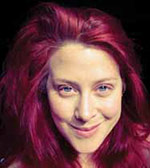 Miss Renae Sayers
Miss Renae SayersSpeaker
Theatre and Events Coordinator, SciTech
@lycrageek
Renae Sayers is an international science communicator who has dedicated her life to empowering people with the enlightenment that scientifi c literacy can provide. She strives to make the world a better place one light-bulb moment at a time. Based in Perth, Renae manages the Science Theatre and Events at Scitech—Western Australia’s premier science centre. From producing and performing inspiring and engaging science shows to developing inventive programs, panels and projects, Renae connects the audience with the delight and wonder in the world through science themes, skills and understanding. From her time at Scitech, the Edinburgh International Science Festival and Questacon—The National Science and Technology Centre, she has collaborated and performed with communities across Australia, the UK, Japan, Abu Dhabi, Beijing and Singapore to achieve this goal.
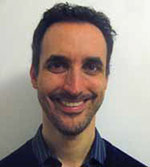 Dr Richard Scalzo
Dr Richard ScalzoSkyMapper Postdoctoral Fellow, The Australian National University
Richard Scalzo is interested in how stars explode as supernovae, and how to improve their use in measurements of the mysterious ‘dark energy’ driving our Universe’s accelerating expansion. He has led the development and operation of several large-scale software pipelines to search for variable objects in astronomical imaging surveys, including the SkyMapper supernova search. Richard’s use of Bayesian probability to infer properties of Type Ia supernova progenitors bridges theory and observation, and has been featured in print and online science media such as New Scientist, Astronomy Magazine and Physics Today.
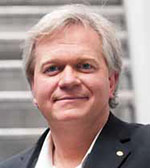 Professor Brian Schmidt AC FAA FRS
Professor Brian Schmidt AC FAA FRSOversight Committee and Mentor
Distinguished Professor, Research School of Astronomy and Astrophysics, The Australian National University
Brian Schmidt is a Laureate Fellow and Distinguished Professor at The Australian National University. Brian received undergraduate degrees in astronomy and physics from the University of Arizona in 1989, and completed his astronomy Master’s degree (1992) and PhD (1993) at Harvard University. Under his leadership, in 1998, the HighZ Supernova Search team made the startling discovery that the expansion rate of the Universe is accelerating, work that earned him the 2011 Nobel Prize in Physics. A Fellow of the Australian Academy of Science, the United States Academy of Science, and the Royal Society, he was made a Companion of the Order of Australia in 2013.
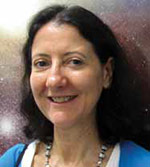 Ms Helen Sim
Ms Helen SimPublic Relations Offi cer, ARC Centre of Excellence for All-sky Astrophysics, University of Sydney
@sky_pointer
Helen Sim publicises the research activities of the Australian astronomical community through outreach events, writing and liaising with the media. She works with scientists and technologists to translate complex information into plain language suitable for audiences beyond the astronomical community.
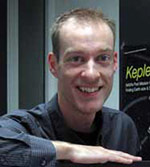 Dr Dennis Stello
Dr Dennis StelloSenior Lecturer and Australian Research Council Future Fellow, University of Sydney
Dennis Stello is an expert on asteroseismology—an exiting new fi eld that infers the physical properties of stars from the in-print of internal standing sound waves arising from star quakes. Analogous to how earthquakes can reveal information about the Earth’s interior, Dennis has used asteroseismology to measure intricate details of stars in the Milky Way, and is working closely with NASA to characterise planet-hosting stars found by the Kepler space telescope. With current and future space missions, Dennis will use his seismic information of tens of thousands of stars to probe the structure and evolution of our Galaxy. He received his PhD in 2007 and has since held a string of fellowship positions at the University of Sydney, including an Australian Research Council (ARC) Postdoctoral Fellowship, an ARC Discovery Early Career Research Award Fellowship, and now an ARC Future Fellowship. Dennis was awarded the New South Wales Young Tall Poppy of the Year in 2013.
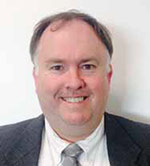 Dr Andrew Stevenson
Dr Andrew StevensonAssistant Manager—Science Policy, Science Policy and Governance Division, Australian Government Department of Industry
Andrew Stevenson works in the Science Policy and Governance Division of the Department of Industry, with a particular focus on astronomy, and has consulted with the Australian astronomy community for over eight years on investment priorities, national research infrastructure, and broader policy issues. He has a research background in optical physics and photonics, as well as a background in teaching, postgraduate supervision and research in the academic and industry sectors.
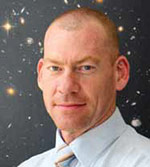 Professor Steven Tingay
Professor Steven TingaySpeaker
Director, International Centre for Radio Astronomy Research
@stingay
Steven Tingay is a Western Australian Premier’s Research Fellow, director of the Curtin Institute of Radio Astronomy, director of the International Centre for Radio Astronomy Research, and director of the Murchison Widefi eld Array (MWA) project. Steven has authored or co-authored over 130 papers in international refereed journals and has attracted over $80 million of research funding over the past decade. His main interests are in radio astronomy and astrophysics. He has been responsible for the development of instrumentation and software that is now used around the world. Steven currently leads the MWA project—a $50 million international radio telescope recently completed and brought into its operational phase in the remote Murchison region of Western Australia—which is the low-frequency precursor for the multi-billion dollar Square Kilometre Array (SKA). He has been an active contributor to the international SKA project for the past decade. Steven is an alumnus of the University of Melbourne and The Australian National University.
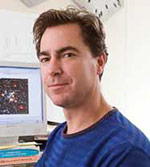 Professor Peter Tuthill
Professor Peter TuthillProfessor, School of Physics, University of Sydney
Peter Tuthill is an expert on high-resolution imaging techniques in the optical and near-infra-red. He has conducted imaging experiments, installing dedicated hardware on almost all of the world’s 10 metre-class telescopes, as well as several space telescopes (including the James Webb Space Telescope).
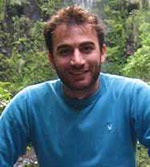 Mr Georgios Vernardos
Mr Georgios VernardosPhD student, Swinburne University of Technology
Georgios Vernardos focuses on data-intensive scientifi c problems in physics and astrophysics. He is working with large-scale supercomputer simulations, data management, interactive e-tools, and visualisations. Georgios has been carrying out the GERLUMPH (gerlumph.swin.edu.au) parameter survey, preparing for the quasar microlensing survey era.
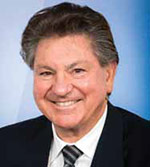 Mr Noel Wainwright
Mr Noel WainwrightPanellist
Director, C4ISR Programs, Lockheed Martin Australia
Noel Wainwright is a business person, representing (among others) in Australia the Lockheed Martin Corporation, US. His focus is on C4ISR Programs (including command, control, communications, computing, intelligence, surveillance and reconnaissance). Noel handles the promotion and business analysis of opportunities that arise for Lockheed Martin Corporation in the C4ISR arena.
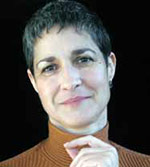 Ms Margaret Wertheim
Ms Margaret WertheimMentor and Speaker
Director, The Institute For Figuring
@margaretwerth
Margaret Wertheim is an internationally noted science writer and exhibition curator whose work focuses on the relations between science and the wider cultural landscape. She is the author of three books on the cultural history of physics, including Pythagoras’ trousers, a history of the relationship between physics and religion, and The pearly gates of cyberspace: a history of space from Dante to the internet.
Margaret has a BSc in physics (The University of Queensland) and a BA in mathematics (University of Sydney). As a journalist, she has written for The New York Times, Los Angeles Times, The Sciences, New Scientist, The Guardian and many others. Her work has been included in Best American science writing and Best Australian science writing. In 2004, she was the US National Science Foundation’s visiting journalist to Antarctica and in 2006 she won the excellence in journalism award from the American Institute of Biological Sciences. Margaret has lectured widely at universities internationally, including Harvard, Tufts, Oxford, Rutgers and Cornell.
In 2003, Margaret and her sister Christine founded the Institute For Figuring (IFF), a Los Angeles-based organisation devoted to public engagement with the aesthetic and poetic dimensions of science and mathematics (www.theiff.org). The IFF’s Crochet Coral Reef project is now the largest participatory science-and-art endeavour in the world. Through an unlikely conjunction of geometry, art and handicraft, the Crochet Coral Reef addresses global warming by engaging people in participatory, hands-on, informal science education. The project has inspired communities throughout the US, Europe and Australia. Margaret’s TED talk on the topic has been viewed more than a million times and translated into 20 languages.
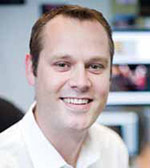 Mr Pete Wheeler
Mr Pete WheelerSpeaker
Manager—Outreach, Education and Communications, International Centre for Radio Astronomy Research
Pete Wheeler studied physics at Leeds University in the north of England, before graduating in 2001 and working for a company producing photomultipliers in north-west London. In 2003, Pete immigrated to Western Australia and began working for Scitech, Perth’s science discovery centre, as an outreach presenter.
After a series of roles developing educational resources for WA teachers, managing the largest planetarium in the Southern Hemisphere and coordinating large-scale education and outreach initiatives such as Astronomy WA, and the International Year of Astronomy for Western Australia, Pete now defi nes himself as a professional science communicator; a role that is becoming more and more recognised. Pete is currently the outreach, education and communications manager for the International Centre for Radio Astronomy Research, a joint venture of Curtin University and The University of Western Australia.
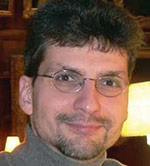 Dr Christian Wolf
Dr Christian WolfSkyMapper Survey Scientist, The Australian National University
Christian Wolf is survey scientist for the SkyMapper Southern Survey, which is a project led by The Australian National University (ANU) to map all of the southern sky in six spectral passbands. He works on methods for object classifi cation, machine learning and photometric redshift estimation. His science interests cover the evolution of galaxies and quasars over cosmic time, as well as the nature of stellar explosions. Christian obtained his PhD in 1999 from the Max Planck Institute of Astronomy in Germany. After a decade at Oxford University, he joined the ANU in 2013.
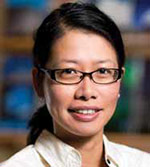 Dr Ivy Wong
Dr Ivy WongSuper Science Fellow, International Centre for Radio Astronomy Research
Ivy Wong is an Australian astronomer whose work centres around understanding the physical processes that govern how galaxies accrete gas, form stars and evolve. One of the other questions she is investigating is how galaxies form supermassive black holes and how these black holes co-evolve with their host galaxies. As current pattern recognition algorithms are still inferior to the human eye–brain combination, Ivy also uses citizen science as an alternative data processing technique. She currently leads the radio.galaxyzoo.org project, which asks ordinary citizens to identify the host galaxies of supermassive black holes.
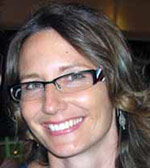 Ms Emma Woodward
Ms Emma WoodwardSpeaker
Research Scientist, CSIRO Ecosystem Sciences
Emma Woodward is a geographer with extensive experience in engaging northern Aboriginal communities in participatory ecological research to inform natural resources planning and management. She holds a strong interest in the development of ethical research protocols and community-scale (Indigenous) research agreements, and has employed diverse methods to facilitate community– science engagement and ensure mutually benefi cial outcomes beyond a project’s life. Emma has very recently returned from a Canadian study tour to identify novel and best-practice approaches to developing community-partnered research. Australia. Margaret’s TED talk on the topic has been viewed more than a million times and translated into 20 languages.
 Professor Stuart Wyithe
Professor Stuart WyitheOrganising Committee
Australian Laureate Fellow, School of Physics, University of Melbourne
Stuart Wyithe is an Australian Laureate Fellow at the University of Melbourne. His research interests are in cosmology and galaxy formation, with a focus on simulating the earliest galaxies in the Universe. He is the chair of the National Committee for Astronomy, which is currently undertaking the Decadal Plan for Australian astronomy 2016–2025.
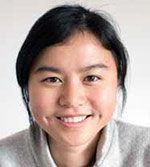 Dr Fang Yuan
Dr Fang YuanPostdoctoral Research Fellow, The Australian National University
Fang Yuan received an undergraduate degree in physics from Beijing University in 2003 and completed her PhD in physics at the University of Michigan in 2010. She is interested in a wide range of cosmic explosion phenomena. Fang Yuan is currently a research fellow at The Australian National University and the ARC Centre of Excellence for All-sky Astrophysics (CAASTRO). As a key member of the SkyMapper Transient Search team, she hopes to discover hundreds of supernovae each year to improve constraints on cosmology and to understand the nature of all types of supernova explosions. Fang Yuan is also involved in OzDES, a spectroscopy program that will enable the Dark Energy Survey to make the ‘most detailed ever’ measurement of the Universe’s expansion history. Fang Yuan
© 2025 Australian Academy of Science